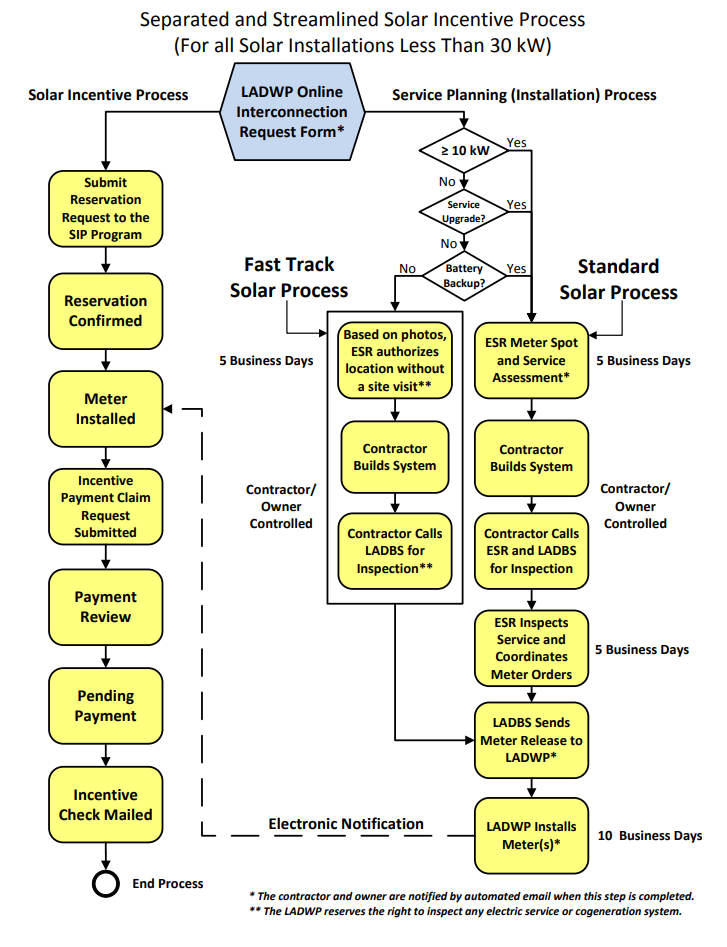
Solar.com’s office building, the La Kretz Innovation Campus, is in fact owned by the Los Angeles Department of Water and Power. It’s exciting for us to be so closely aligned with a progressive utility company.
One of the greatest programs LADWP has to offer its customers is the Solar Incentive Program (SIP). If you’re an Angeleno who pays for electricity from LADWP, is sure you consider taking advantage of the SIP before it expires at the end of 2018.
What is LADWP’s Solar Incentive Program?
Simply put, DWP’s SIP provides a significant rebate to individuals who choose to go solar. It’s been around since 1999 (progressive!) and was updated in 2007 to meet the criteria laid out by the statewide California Solar Initiative.
Since 2007, DWP has committed to distributing $313 million in rebates for PV projects. It was supposed to end in 2016, but funds still remain so the utility decided to extend it until the end of this year.
The overarching goal of the SIP has been to support the installation of 280 MW (megawatts) of solar power in DWP territory.
What is the SIP rebate amount?
The DWP Solar Incentive Program rebate amount is set at a price per watt ($/W) rate. For instance, if you installed a 10 kW (kilowatt) system on your home and claimed the $0.25/W rebate, you would get a $2,500 check from DWP for the 10,000 W (watts) that you installed.
The actual rebate rate varies depending on your situation and type of project.
Here’s a table showing the different levels since 2017:
| PROJECT TYPE | REBATE RATE | EXAMPLE REBATE (10 kW system) |
| Residential | $0.25/W | $2,500 |
| Commercial | $0.30/W | $3,000 |
| Government, non-profit, affordable housing | $0.95/W | $9,500 |
How much is this rebate compared to the total cost for your solar project? Assuming you are a residential customer and elect standard equipment options, you’ll likely be paying around $3.40/W for your solar project.
The $0.25/W rebate rate is essentially a 7.4% rebate on the gross system cost of your solar project. Factoring in the 30% federal solar tax credit, this rate amounts to a 10.5% rebate. Not too shabby!
When will the DWP Solar Incentive Program expire?
It’s difficult to find on DWP’s website, but on page 4 of the 2017 SIP Guidelines, it clearly states that funds will stop being allocated on December 31st, 2018, even if there are still funds remaining.
According to the latest SIP Dashboard (available here), there have already been more than $317.4 million rebates distributed, with only $7.6 million remaining. DWP must have upped their original commitment of $313 million, but the bottom line is that there aren’t many funds left.
Conservatively assuming only residential customers claim the rebate on new projects, there’s only enough funding for 30.4 million watts or 30,400 kW of solar. The average solar home needs 7 kW, so that’s enough funding for about 4,300 homes.
How do I claim the SIP rebate?
To claim the rebate, make sure you are an LADWP customer who submits the incentive reservation before December 31st, 2018.
Receiving utility Permission To Operate (PTO) is not a requirement before the end of this year. As long as you receive PTO and submit an Incentive Payment Claim before the “installation expiration date” you’re provided (either 6 or 12 months after reservation submission), you should be good to go.
The actual process of claiming the incentive is pretty complex, and ties into how your system will remain connected to the grid with net energy metering. But don’t worry – your installer, assuming you choose a qualified solar provider, should handle all of the logistics for filing the rebate.

Phew that looks complicated! Good thing your solar installer will take care of this for you.
Refer to DWP’s How to Apply page of the SIP for the most up to date information.
Three Tips for Going Solar in Los Angeles
Ideally, you could just use our streamlined online platform to go solar. Our service wraps in all of these benefits but, even if you choose not to go solar with Solaar.com, here are three important things to keep in mind:
- Get multiple offers. Los Angeles is the most competitive market for solar, take advantage of it! The more offers you can get on your home, the more likely you’ll find a good deal.
- Only lease solar if you have to. Leasing was an attractive option a decade ago, but there are now improved loan financing options that will let you retain ownership of your system for a better ROI.
- Price isn’t all that matters. It’s important to compare your offers apples-to-apples. Warranties, financing, monitoring can all vary significantly per project, so be sure you’re 100% on the type of solar system you want.
If you’re brand new to solar, our solar starter guide is a great place to get the basics covered.
Our process at Solar.com provides you with multiple solar offers in a couple of days. It beats dealing with multiple solar salespeople. Let’s help you explore going solar in Los Angeles and claim that rebate!
Cover image credit: Anne Cusack / Los Angeles Times
Updated 8/29/2018 to correct the error that PTO was a requirement by December 31, 2018. Only the reservation request is required by that date.



